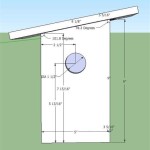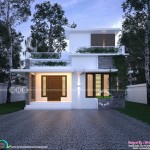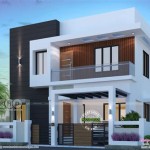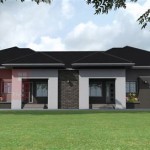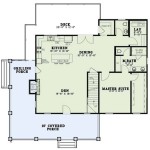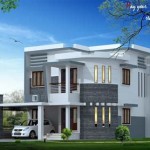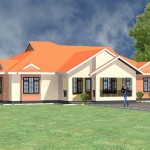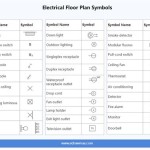Small Bunkhouse Floor Plans
Small bunkhouse floor plans offer a practical and efficient solution for accommodating multiple individuals within a compact footprint. These designs are particularly popular for guest houses, vacation rentals, hunting cabins, and multi-generational living arrangements. Careful planning and consideration of space utilization are key to creating a comfortable and functional bunkhouse.
One of the primary advantages of a small bunkhouse design is its affordability. Smaller structures require fewer materials and less labor to construct, resulting in lower overall building costs. This makes them an attractive option for those working within a limited budget.
Another benefit is the versatility of these plans. They can be adapted to various settings and terrains, from rural landscapes to mountainous regions. Their compact size allows for placement on smaller lots or properties with challenging topography. Furthermore, bunkhouses can be designed as standalone structures or as additions to existing buildings.
Key considerations in planning a small bunkhouse floor plan include the number of occupants, desired amenities, and available space. Determining the maximum occupancy will dictate the number of bunks and the necessary square footage. Common sleeping arrangements include bunk beds, twin beds, or a combination of both. The layout should optimize space for comfortable movement and storage.
Privacy is another important factor, especially in shared living spaces. Consider incorporating partitions, curtains, or built-in storage units to create a sense of personal space. Even small design elements can significantly enhance the overall feeling of privacy within a compact bunkhouse.
Incorporating essential amenities is crucial for a comfortable and functional bunkhouse design. A well-planned bathroom, even a small one, is a necessity. Consider including a shower, toilet, and sink. Efficient plumbing and ventilation are critical in small spaces.
A small kitchenette can greatly enhance the convenience of a bunkhouse. This could include a compact refrigerator, microwave, and countertop space for food preparation. Depending on the intended use and available space, a sink and small cooktop can also be incorporated.
Storage is a vital element in any small bunkhouse. Incorporate built-in storage solutions, such as under-bed drawers, wall-mounted cabinets, and shelving units, to maximize space and keep belongings organized. Utilizing vertical space effectively is key to maintaining a clutter-free environment.
Natural light and ventilation are important considerations for creating a pleasant and healthy living space. Incorporate windows and skylights strategically to maximize natural light penetration and ensure adequate airflow. Proper ventilation helps prevent moisture buildup and maintains air quality.
Choosing durable and easy-to-maintain materials is recommended for bunkhouse construction. Materials should be selected based on the climate and intended use of the structure. Consider factors such as weather resistance, insulation, and fire safety when making material choices.
Several popular layout options exist for small bunkhouse floor plans. A linear layout arranges bunks along one wall, maximizing floor space. An L-shaped layout can create a more defined sleeping area and separate it from other functional zones. A loft design can utilize vertical space effectively, creating additional sleeping or storage areas.
Consulting with a qualified architect or builder is highly recommended when planning a bunkhouse. They can provide expert advice on design, materials, and construction techniques. A professional can ensure the structure meets local building codes and safety regulations.
Careful consideration of the intended use of the bunkhouse is essential. A hunting cabin may prioritize functionality and durability, while a guest house may emphasize comfort and aesthetics. The design should reflect the specific needs and preferences of the occupants.
Accessibility is an important consideration, especially if the bunkhouse will be used by individuals with mobility challenges. Incorporate features like ramps, wider doorways, and grab bars to ensure accessibility and safety for all users.
Outdoor living spaces can significantly enhance the functionality and enjoyment of a bunkhouse. Consider adding a deck, patio, or porch to provide additional space for relaxation and socializing. These areas can be integrated seamlessly into the overall design.
Energy efficiency is a crucial aspect of sustainable building practices. Incorporate energy-efficient features such as insulation, double-paned windows, and energy-saving appliances to minimize operating costs and reduce environmental impact.
Ultimately, a well-designed small bunkhouse floor plan provides a comfortable, functional, and affordable solution for accommodating multiple individuals. Careful planning and consideration of essential elements, such as space utilization, privacy, amenities, and storage, are key to creating a successful and enjoyable living space.

Bunkhouse Tlc Modular Homes Cabin Floor Plans Bunk House

Cabin Floor Plans Small House Tiny

Modular Bunkhouse Living Facilities For Remote Workforce

Bunkhouse Diy Building Plans Jamaica Cottage

Small Bunkhouse Floor Plan Sheds Quebec West Shed Company

Small Cabin Designs With Loft Floor Plans

13 Best Small Cabin Plans With Cost To Build Craft Mart

The Bunk House Milled Rcm Cad Design Drafting Ltd

226 12 X 14 8 Bunk House Cabin Plan Mendon Cottage Books

I Like This Bunk House But Can T Figure Out How To Best Apply It A Camp Plans

